Types of 2-Stroke Cylinder Blocks
A 2-stroke cylinder block is a crucial component of a two-stroke engine that completes its cycle in just two piston strokes (one crankshaft revolution) instead of the four strokes in standard engines. The cylinder block houses the combustion chambers where pistons move up and down, generating power. Different applications require specialized cylinder block designs to optimize performance.
Forklift Trucks
2-stroke engines in forklifts are prized for their exceptional power-to-weight ratio and mechanical simplicity. The cylinder blocks feature:
- Integrated water jackets for efficient cooling
- Noise reduction design elements
- Emission control features to meet regulations
- Compact size for space-efficient industrial applications
Best for: Industrial lifting applications requiring high power output in limited spaces
Outboard Motors
Marine applications demand specialized cylinder blocks built to withstand harsh environments:
- Corrosion-resistant materials for saltwater exposure
- Optimized weight-to-strength ratio
- Enhanced cooling systems for continuous operation
- Streamlined design for high-performance boating
Best for: Marine environments requiring lightweight, powerful engines
Chainsaws
Handheld power tools benefit from specialized 2-stroke cylinder blocks with:
- Ultra-lightweight construction for extended use
- Fast warm-up design for quick power delivery
- Simplified maintenance access points
- Superior heat dissipation for continuous operation
Best for: Portable power tools requiring high power-to-weight ratio
Motorcycles
Performance-oriented 2-stroke motorcycle engines feature cylinder blocks with:
- Advanced port timing for optimized power delivery
- Precision cooling systems (air or water)
- High-compression designs for maximum performance
- Lightweight materials for improved handling
Best for: Racing and performance applications where power-to-weight ratio is crucial
Automobiles
Though less common in modern vehicles, 2-stroke automobile cylinder blocks offer:
- Integrated exhaust scavenging systems
- Balance between performance and efficiency
- Emission control technologies
- Simplified mechanical design with fewer valves
Best for: Specialized vehicles where simplicity and power density are priorities
Industry Insight: 2-stroke engines produce more power per displacement than 4-stroke engines because they generate power with every crankshaft revolution rather than every other revolution. This makes them ideal for applications where power-to-weight ratio is critical.
Specifications & Maintenance of 2-Stroke Cylinder Blocks
Key Specifications
| Specification | Options | Considerations |
|---|---|---|
| Material | Ductile iron, grey cast iron, malleable cast iron, aluminum alloy | Material choice affects weight, durability, heat dissipation, and cost |
| Cooling Method | Water cooling, air cooling | Water cooling for larger engines, air cooling for simpler, more compact designs |
| Cylinder Arrangement | Vertical, horizontal, V-shaped | Affects engine profile, balance, and power delivery characteristics |
| Surface Finish | Various roughness grades, hardening treatments | Impacts wear resistance, friction, and overall performance |
| Port Design | Transfer ports, exhaust ports, intake ports | Critical for scavenging efficiency and power production |
Material Properties Comparison
| Material | Strength | Weight | Heat Dissipation | Corrosion Resistance | Cost |
|---|---|---|---|---|---|
| Ductile Iron | High | High | Good | Moderate | Moderate |
| Grey Cast Iron | Moderate | High | Excellent | Low | Low |
| Malleable Cast Iron | Moderate | High | Good | Moderate | Moderate |
| Aluminum Alloy | Moderate | Low | Excellent | Good | High |
Essential Maintenance
Proper maintenance significantly extends the service life of 2-stroke cylinder blocks while optimizing performance:
| Maintenance Task | Frequency | Purpose | Procedure |
|---|---|---|---|
| Regular Inspection | Every 50 hours of operation | Detect early signs of wear or damage | Visual inspection for cracks, scoring, or discoloration |
| Cleaning | Every 100 hours of operation | Remove carbon deposits and contaminants | Clean ports and surfaces without damaging finishes |
| Lubrication | Per manufacturer specs (typically with fuel mix) | Reduce friction and wear | Maintain proper oil-to-fuel ratio for lubricating function |
| Wear Parts Replacement | As needed based on inspection | Prevent catastrophic failure | Replace piston rings, gaskets, and seals when worn |
| Cooling System Maintenance | Every 200 hours of operation | Ensure proper heat dissipation | Clean cooling fins or flush water cooling system |
Critical Warning: Never operate a 2-stroke engine without proper lubrication. Unlike 4-stroke engines with separate oil reservoirs, 2-stroke engines rely on fuel-oil mixture for lubrication. Incorrect mixture ratios can cause permanent damage to the cylinder block and other components.
How to Choose 2-Stroke Cylinder Blocks
Selecting the optimal 2-stroke cylinder block requires careful consideration of multiple factors to ensure performance, reliability, and cost-effectiveness. Business buyers should evaluate the following criteria:
Compatibility & Integration
- Must match existing engine components (crankshaft, piston, head assembly)
- Verify port timing and alignment specifications
- Check mounting points and dimensions for proper fit
- Confirm compatibility with peripheral systems (cooling, exhaust, intake)
Key consideration: Even minor incompatibilities can cause significant performance issues or mechanical failure
Quality & Reliability Factors
- Material composition and manufacturing process
- Surface finish precision and consistency
- Supplier reputation and quality control standards
- Warranty terms and historical reliability data
Key consideration: Higher initial cost often translates to better longevity and reduced maintenance expenses
Performance Characteristics
- Power output requirements for the application
- Efficiency and fuel consumption expectations
- Heat management capabilities
- Port design for optimal gas flow
- Operating RPM range compatibility
Key consideration: Performance needs should align with the intended application's power requirements
Budget & ROI Analysis
- Initial purchase cost vs. long-term operational expenses
- Expected service life and maintenance intervals
- Replacement part availability and cost
- Impact on overall system efficiency and productivity
Key consideration: Total cost of ownership often exceeds initial purchase price
Technical Specifications
- Weight considerations for application requirements
- Cooling method suitability for operating environment
- Material selection based on operating conditions
- Maintenance accessibility and serviceability
Key consideration: Technical specifications must match both current and anticipated future needs
Environmental Factors
- Emissions regulations compliance
- Noise level requirements
- Operating environment considerations (temperature, humidity, dust)
- Sustainability and recyclability factors
Key consideration: Regulatory compliance is increasingly important in equipment selection
Procurement Tip: When sourcing 2-stroke cylinder blocks, request detailed technical specifications including material composition, dimensional tolerances, and performance test results. These documents provide valuable insights beyond what's typically included in marketing materials and can significantly influence your selection decision.
How to DIY and Replace 2-Stroke Cylinder Blocks
Replacing a 2-stroke cylinder block requires mechanical aptitude and attention to detail, but with proper preparation and careful execution, it can be accomplished successfully. Follow this comprehensive guide to ensure proper replacement:
Required Tools and Materials
| Category | Items | Purpose |
|---|---|---|
| Hand Tools | Socket set, wrench set, Torx set, screwdrivers, gasket scraper | Disassembly and reassembly of engine components |
| Specialty Tools | Torque wrench, piston ring compressor, feeler gauges | Precise assembly and measurement |
| Replacement Parts | New cylinder block, piston rings, cylinder head bolts, gaskets | Core components being replaced |
| Consumables | Oil, anti-seize compound, gasket maker, cleaning solvent | Preparation and assembly materials |
| Safety Equipment | Safety glasses, gloves, shop towels | Personal protection during work |
Step-by-Step Replacement Process
Step 1: Preparation
Create a clean, well-lit workspace and gather all necessary tools and parts before beginning. Take photos of the engine assembly for reference during reassembly.
Step 2: Engine Preparation
- Disconnect the spark plug wire and remove the spark plug
- Drain any coolant from the cooling system (if applicable)
- Remove air intake, exhaust, and any components blocking access
- Document the position of all components for accurate reassembly
Step 3: Cylinder Head Removal
- Loosen cylinder head bolts in a crisscross pattern to prevent warping
- Carefully lift the cylinder head straight up to avoid damaging surfaces
- Inspect the head for damage or carbon buildup that should be addressed
Step 4: Cylinder Block Removal
- Carefully slide the cylinder block upward, off the piston
- Protect the connecting rod and crankshaft from debris
- Cover the crankcase opening to prevent contamination
Step 5: Piston Preparation
- Inspect the piston for wear or damage
- Clean carbon deposits from the piston crown and ring grooves
- Replace piston rings if needed, following proper orientation
- Apply a light coat of 2-stroke oil to the piston and rings
Step 6: New Cylinder Installation
- Clean and prepare mating surfaces, removing old gasket material
- Install new base gasket with proper orientation
- Compress piston rings using a ring compressor tool
- Carefully slide the new cylinder over the piston, ensuring rings don't catch
- Rotate the cylinder to align mounting holes with crankcase
Step 7: Cylinder Head Installation
- Install new head gasket with proper orientation
- Place cylinder head onto cylinder block
- Apply anti-seize compound to head bolt threads
- Tighten bolts in crisscross pattern to specified torque in 2-3 stages
Step 8: Component Reinstallation
- Reinstall exhaust, intake, and cooling system components
- Replace spark plug with correct gap and tighten to specification
- Reconnect spark plug wire
- Refill cooling system if applicable
Step 9: Testing
- Rotate engine by hand to check for binding or unusual resistance
- Start engine and allow to warm up at idle
- Check for leaks or unusual noises
- Monitor temperature during initial operation
Critical Warning: During the break-in period (first 1-2 hours of operation), avoid high RPM operation and use a slightly richer oil-to-fuel mixture than normal. This ensures proper seating of rings and adequate lubrication of the new cylinder walls.
Frequently Asked Questions
A 2-stroke cylinder block is a fundamental engine component that houses the cylinder where combustion occurs. It provides structural support for the engine while containing cooling passages and oil channels for proper operation. The cylinder block in a 2-stroke engine is designed specifically to accommodate the unique gas flow requirements of the 2-stroke cycle, featuring strategically positioned intake, transfer, and exhaust ports that enable the engine to complete its power cycle in just two piston strokes (one crankshaft revolution).
2-stroke cylinder blocks feature several distinctive characteristics:
- Port Design: Precisely engineered intake, transfer, and exhaust ports that control gas flow timing
- Structural Integrity: Robust construction to withstand high combustion pressures and thermal stress
- Cooling System: Integrated cooling channels (water jackets) or cooling fins (for air-cooled designs)
- Compact Design: Space-efficient configuration that contributes to the engine's high power-to-weight ratio
- Surface Finish: Precision-honed internal surfaces to optimize piston ring sealing and minimize friction
- Material Selection: Specialized alloys that balance strength, heat dissipation, and weight requirements
The fundamental differences between 2-stroke and 4-stroke cylinder blocks include:
| Feature | 2-Stroke Cylinder Block | 4-Stroke Cylinder Block |
|---|---|---|
| Port Configuration | Features transfer ports in cylinder walls | No transfer ports; uses valves in cylinder head |
| Lubrication System | Designed for oil-fuel mixture lubrication | Designed for separate oil circulation system |
| Complexity | Simpler design with fewer moving parts | More complex with valve train components |
| Power Delivery | One power stroke per revolution | One power stroke per two revolutions |
| Weight | Typically lighter for same displacement | Typically heavier due to additional components |
| Thermal Design | Higher cooling requirements due to more frequent power strokes | Lower cooling requirements relative to power output |
2-stroke cylinder blocks offer several significant advantages:
- Higher Power Density: Produces more power per unit of displacement due to more frequent power strokes
- Mechanical Simplicity: Fewer moving parts means lower manufacturing costs and reduced maintenance
- Lighter Weight: Simplified design results in less mass for equivalent power output
- Position Flexibility: Can operate in almost any orientation, making them ideal for handheld tools
- Compact Size: Smaller overall dimensions for equivalent power output compared to 4-stroke designs
- Quick Response: Faster power delivery due to more frequent power strokes
These advantages make 2-stroke cylinder blocks particularly well-suited for applications where power-to-weight ratio, simplicity, and compact size are priorities.

































































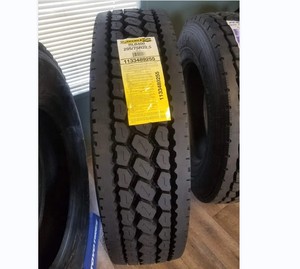






















































































































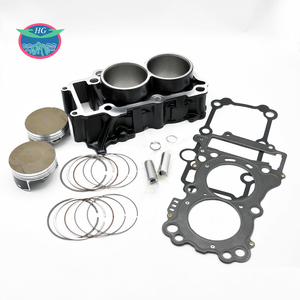
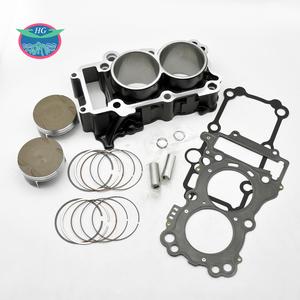
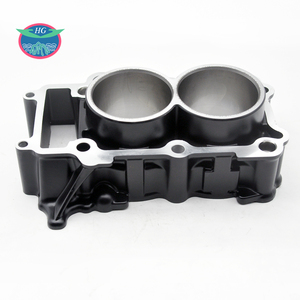
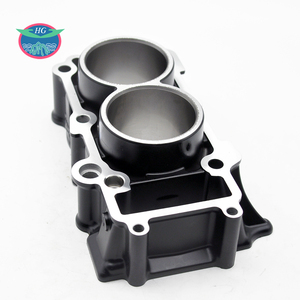
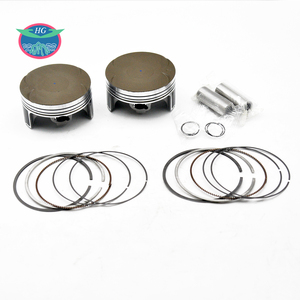
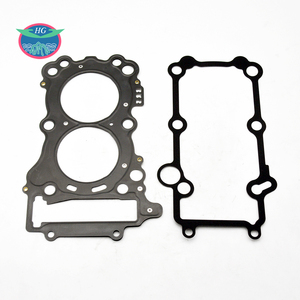























































 浙公网安备 33010002000092号
浙公网安备 33010002000092号 浙B2-20120091-4
浙B2-20120091-4